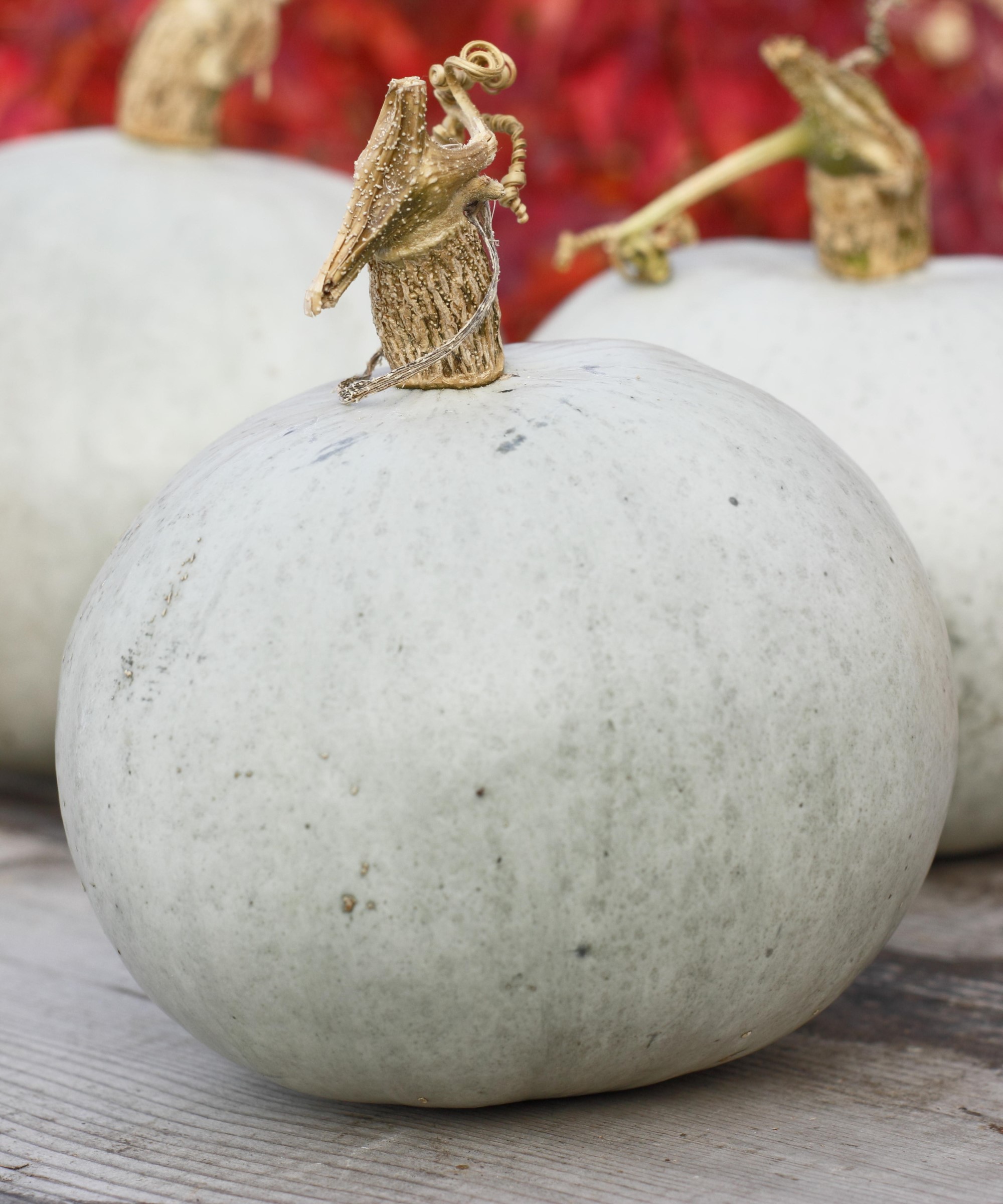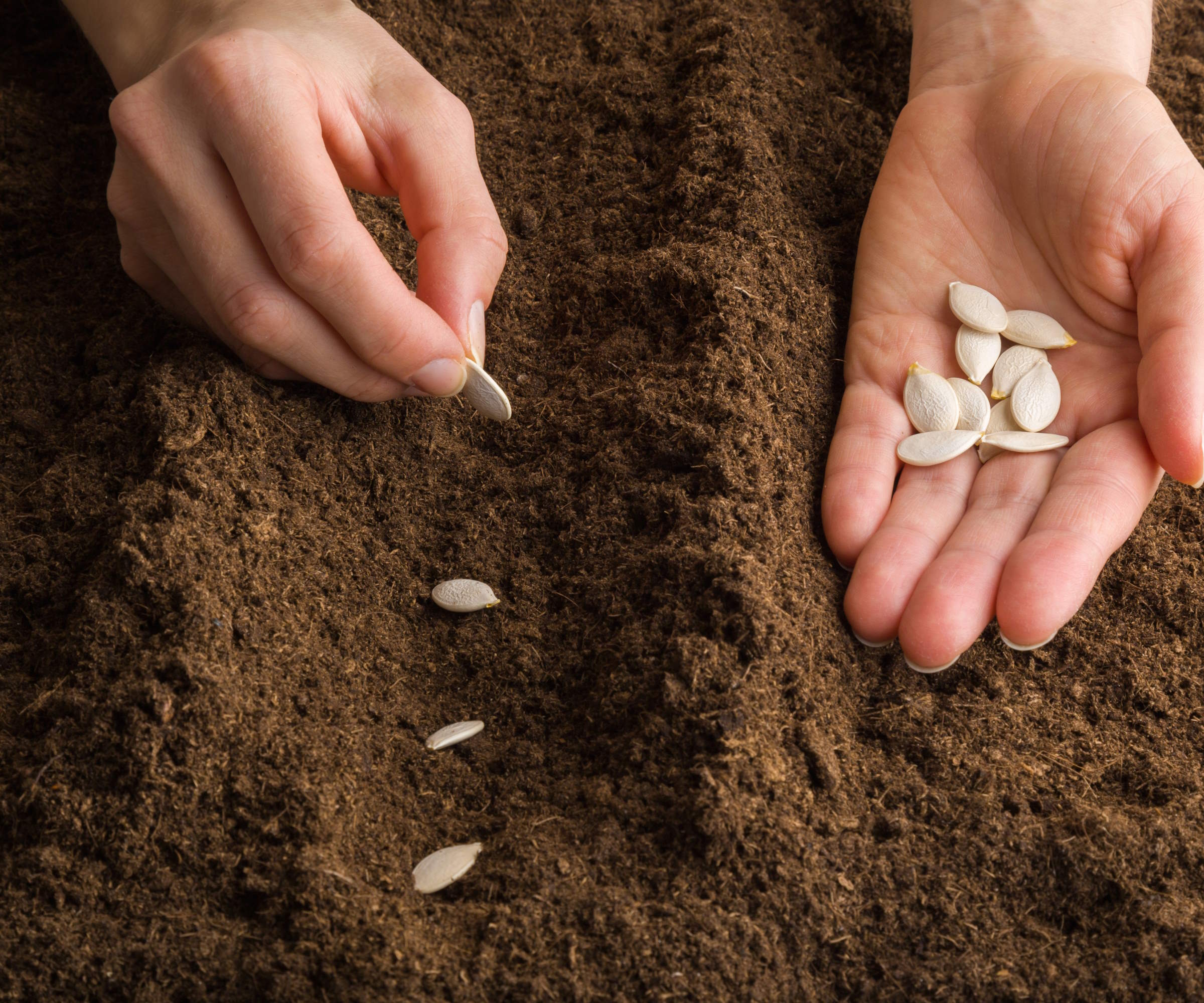How to grow squash successfully from seed – by sowing indoors or outdoors
Discover how to plant squash seeds and grow fantastic crops through to harvest


Squash come in lots of different sizes, shapes, colors, and flavors. Whether you grow winter or summer types of squash, they are easy-to-grow plants that also offer a range of culinary possibilities.
The types of squash you grow will predominantly depend on your space and what you plan to do with them. Summer squashes are picked and eaten through summer and fall, while larger winter types are harvested in fall and can be stored to provide food throughout the cold winter months.
I have always grown a combination of different types of squashes in the vegetable gardens I worked in, both summer and winter. Particular varieties, including ‘Delicata’, ‘Crown Prince’, ‘Uchiki Kuri’, and ‘Butternut’ were always popular - both with the chefs I grew for and also the public, to whom I sold squashes from a small stall in the vegetable garden.

Squash 'Crown Prince' is a popular variety to grow
How to grow squash plants
If you want to add squash to your kitchen garden, plants are readily available in late spring and early summer to buy from nurseries, garden centers, or online retailers.
Buying young plants is the easiest and quickest way to grow squash, however, the crop can easily be grown from seed as a budget-friendly way to cultivate squash.
There are many different types and varieties of squash you can grow at home and the range available to grow from seed will be wider than the typical squash plants seen available to purchase. You can discover the range of squash seeds available at Ferry-Morse
How to grow squash from seeds
Squash plants can be simple to grow from seed and, depending on your location, they can either be started indoors or outdoors.
Design expertise in your inbox – from inspiring decorating ideas and beautiful celebrity homes to practical gardening advice and shopping round-ups.
Sow seeds indoors

Sow squash seeds into large modules or individual pots
I have always sowed my squash seeds indoors, as I live in a cooler climate and want to give the plants the longest growing season possible. Therefore, starting the vegetable seeds indoors in March or April means you will have strong and healthy seedlings ready to plant out once the frost is over.
To sow seeds indoors, fill large modules or small pots with a good seed-starting compost and plant one seed per pot around 1 inch deep. Keep the pots somewhere warm, such as in a greenhouse or on a bright windowsill, ideally at temperatures of around 65–70°F.
The compost wants to be kept moist, but not waterlogged, and the germination should occur within 10 days in ideal conditions. You can transplant seedlings outside once the plants are large enough to handle and the frosts have ended for your location.
Sow seeds outdoors

Squash seeds can be sown direct once the soil warms up
If you live in warmer climates, where spring starts earlier, Rebecca Sears, a gardening expert at Ferry-Morse, advises how to sow seeds outdoors straight into the vegetable garden. If you do want to sow squash directly outside into their growing spot, you can use cloches or fleece to warm the soil earlier.
‘Once the last frost has passed, sow a few squash seeds into hilled, well-drained soil in a sunny location,’ says Rebecca. ‘Hill spacing will vary based on the squash variety you’re planting, but generally, you should sow 4-5 seeds about 1 inch deep in hills spaced about 6 feet apart.
‘When the seedlings are 3 inches tall, thin them by cutting all but the 3 strongest seedlings per hill.’
Slugs and snails can be a problem when sowing seeds directly into the ground, as they are prone to nibbling young seedlings as they appear. Covering plants, using beer traps, or putting in a boundary of sharp materials are just some slug control methods that can prevent pests from eating your precious seedlings.

As CMO and resident green thumb for the Green Garden family of brands, Rebecca Sears nurtures the company's heritage but also looks to develop new products and solutions to help gardeners of all skill levels fuel their passion and become more successful in the garden. Rebecca has been gardening from coast to coast, first realizing her passion while living in Portland, Oregon, inspired by the public gardens throughout the city.
How to plant and grow squash

There are many different varieties of squash you may choose to grow
Squash plants want to grow in a sunny spot, so you must pick a warm and full sun spot in your backyard. Rebecca Sears recommends that squash ‘should be grown in sunny areas where the plants will receive 6 to 8 hours of direct sunlight per day’. She adds: ‘You’ll also want to plant your squash in well-drained, fertile soil with a pH level between 6.0 and 7.0, which can easily be determined using a pH meter.’
It also wants to be a very fertile soil type, so it can be beneficial to mix lots of organic matter, such as compost or well-rotted manure, into the site before planting. This addition of organic matter will help the soil retain moisture and provide vital nutrients to squash plants as they establish and grow quickly.
Make a large hole for your squash plants and add more organic matter, or a well-balanced fertilizer, to the soil mix as you refill the planting hole. An example of a balanced feed that could be added at the time of planting is this natural all-purpose plant food available at Walmart.
Young plants can be added to the garden once the risk of frosts has passed for your US hardiness zone and you can plant the vegetables from May onwards. Plants can also be planted in raised beds or large containers filled with a good potting mix - size is important and a container that is 18 inches in diameter will be able to contain just one squash plant.
Squash plants are prolific growers so you do need to space plants between three and five feet apart, depending on the variety, to give them room for the vines to spread.
The alternative is to grow squash vertically up a trellis, this can save valuable space and make squash a crop even for small vegetable gardens. Mulching around the plants after planting can help suppress weeds, retain moisture in the soil, and add further nutrients for the plants.
How to maintain squash plants

Butternut squash is a popular winter squash among growers
Watering is important to help the young plants establish and, as squash are fast-growers and hungry plants, you do need to keep the soil consistently moist. Rebecca Sears advises: ‘Squash should be kept in moist soil, so be sure you’re giving your plants up to two inches of water per week.’
As well as water, regular feeding can help the vines develop and produce large fruits. Once the plants have started flowering, feeding squash plants with a liquid fertilizer high in potassium, such as a fertilizer designed for growing tomatoes or a seaweed feed, can help develop and ripen fruits. This seaweed fertilizer, available at Amazon, is a great example of a feed that can help squash plants as they grow. A lack of water or feed can be a common factor in why squash leaves turn yellow during the growing season.
Growers can decide whether or not to prune squash plants. If you want to grow lots of fruits, then it is not essential to trim the plants. However, if you would prefer to focus on growing just a few large squashes on each plant, pruning the vines back after three fruit shows will focus the energy on developing. Pruning back all the vines in mid-summer can also help the plant to develop and ripen fruits rather than producing more stems and foliage.
You can harvest summer squash to eat from mid-summer onwards as and when required, though the time to harvest winter squash is much later as you want to leave plants on the vines for as long as possible to ripen. Harvest winter squash from fall onwards and make sure they are lifted before the frosts arrive.
FAQs
Do squash plants need to climb?
Squash plants do not need to climb. They can happily grow by sprawling over the ground, but there are advantages to growing squash vertically. This includes making them ideal for small spaces. Allowing them to climb also improves the air circulation around the plant and lifts fruits away from pests that may try to nibble on them. Not all types of squashes are suitable for being grown vertically, as some are more compact plants.
Can you grow squash from store-bought squash?
Theoretically, yes you can - however, whether it would be recommended is another question altogether. You may collect seeds from inside store-bought squash and plant these free seeds to grow in your garden. There are potential issues with this though, including not knowing the heritage of the seeds. The seeds may be from a hybrid variety of squash, so the resulting squash you get is unknown, and, in the worst-case scenario, they could be carrying diseases that you would not want to introduce to your garden.
Growing pumpkins is very similar to growing squash. Whether you want to grow pumpkins for Halloween displays, to eat, or for both, the plants can also be sown indoors or outdoors and want a lot of space to grow in.

Drew has worked as a writer since 2008 and was also a professional gardener for many years. As a trained horticulturist, he worked in prestigious historic gardens, including Hanbury Hall and the world-famous Hidcote Manor Garden. He also spent time as a specialist kitchen gardener at Soho Farmhouse and Netherby Hall, where he grew vegetables, fruit, herbs, and cut flowers for restaurants. Drew has written for numerous print and online publications and is an allotment holder and garden blogger. He is shortlisted for the Digital Gardening Writer of the Year at the 2025 Garden Media Guild Awards.
